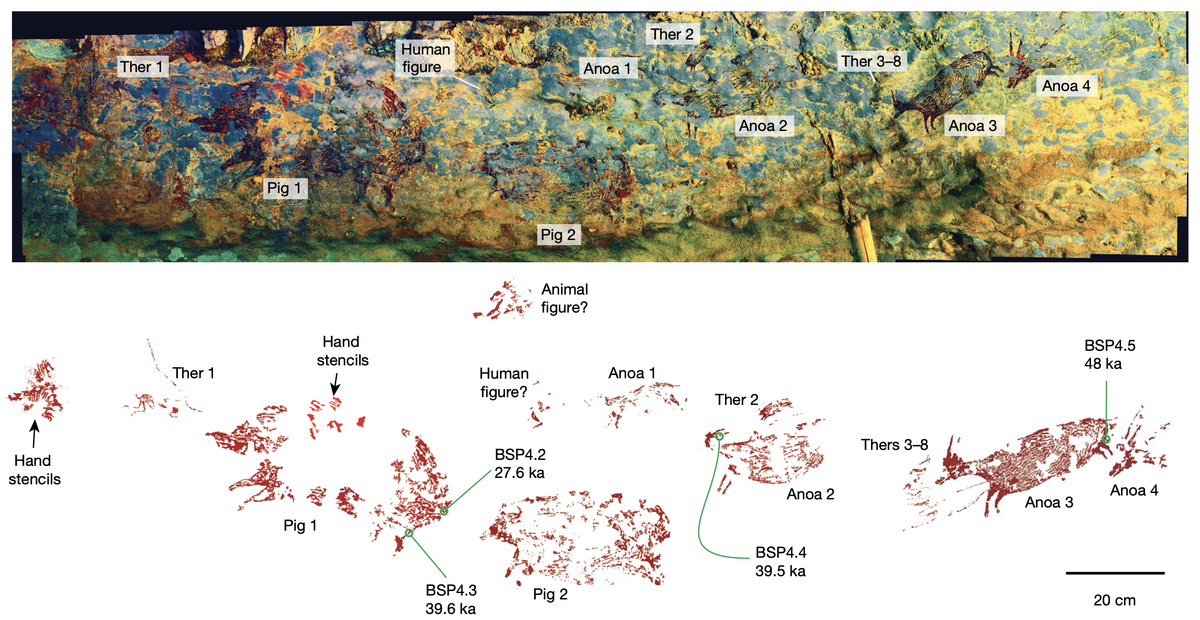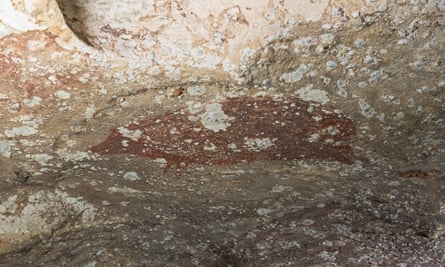In a remarkable breakthrough, archaeologists have uncovered evidence suggesting that the art of storytelling may have emerged far earlier than previously thought. A 51,000-year-old cave painting discovered on the Indonesian island of Sulawesi is now considered the oldest known example of narrative rock art ever discovered.
The artwork, which depicts a human-like figure interacting with a warty pig, provides a glimpse into the complex cognitive abilities of our ancient ancestors. This discovery pushes back the timeline for the origins of storytelling, a hallmark of human evolution and a key factor in our species’ remarkable success.
Tracing the Evolution of Narrative Art

Until recently, the oldest known figurative cave painting was a 21,000-year-old rock art panel in Lascaux, France, showcasing a bird-headed human charging a bison. However, the latest findings from the Maros-Pangkep karst region in Sulawesi have dramatically shifted the narrative.
In 2019, archaeologists unearthed hundreds of examples of rock art in the area, including a 15-foot-wide panel depicting human-like figures engaging with warty pigs (Sus celebensis) and anoas (Bubalus) — a species of dwarf buffalo native to Sulawesi. Further analysis revealed that this panel is at least 43,900 years old, while the oldest individual image found in the area is a 45,500-year-old warty pig.
Revealing the Mysteries of Narrative Art

The latest dating technique, known as laser ablation uranium-series imaging, has pushed the age of the Sulawesi cave paintings even further back, with one depiction of a human-like figure and a warty pig estimated to be at least 51,200 years old. This makes it the oldest known example of narrative art, predating the iconic “Lion Man” sculpture from Germany by over 10,000 years.
Archaeologists are particularly intrigued by the inclusion of a therianthrope, a figure that combines human and animal characteristics. The ability to imagine and depict such supernatural beings is considered a hallmark of complex human cognition, a trait not found in Neanderthals or other early hominid species.
Unlocking the Secrets of the Past

The discovery of this ancient narrative art raises fascinating questions about the lives and cultural practices of our ancestors. Were these paintings part of elaborate storytelling rituals, or did they serve a more symbolic or spiritual purpose? The researchers suggest that the remote location of the cave, tucked away from the rest of the area at a higher elevation, may indicate that it was reserved specifically for art-making.
As the team continues to survey and date more rock art in the region, the potential for further groundbreaking discoveries remains high. The fact that a painting of a human, a half-human-half-bird, and a bird figure has already been found in another nearby cave underscores the rich artistic heritage waiting to be uncovered.
Conclusion
The 51,000-year-old cave painting in Sulawesi represents a pivotal moment in the history of human creativity and expression. This ancient artwork not only pushes back the timeline for the origins of narrative art but also provides valuable insights into the cognitive and cultural development of our species.
As we continue to unravel the mysteries of our past, the Sulawesi cave paintings serve as a powerful reminder of the enduring human drive to tell stories, connect with the world around us, and explore the realms of the imagination. This remarkable discovery has the potential to rewrite the narrative of human evolution and the origins of our most fundamental forms of artistic expression.
